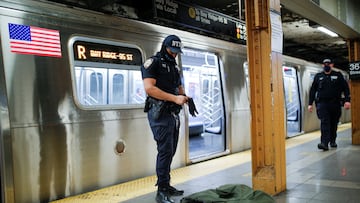The 5 most dangerous cities in the US
Memphis holds the dubious honour of the most dangerous city in the United States, being a prime example how poverty and race intersect to produce crime.


Crime and violence have been two of the big problems in American society for several years. Socio-economic issues such as unemployment, substance abuse, and discrimination exacerbate systemic inequalities and create conditions that may lead to increased crime rates and social unrest.
In this order of issues, several cities in different states especially suffer from a high number of violent crimes. Studies consistently show that areas with higher poverty rates tend to experience more crime.
The five most dangerous cities in the USA
According to the Property Club, five cities in the United States stand out above the rest in terms of danger levels. This data is collected from a statistic that compares the totality of so-called violent crimes with the number of inhabitants of a population.
- Memphis, Tennessee
- St. Louis, Missouri
- Little Rock, Arkansas
- Baton Rouge, Louisiana
- Oakland, California
Related stories
Memphis continues to be, for another year, the most dangerous city in the United States. In 2022, the city was judged to be 237% more dangerous than the national average. With a population of 628,127, Memphis recorded a total of 15,318 incidents of violent crime in 2022, including 289 homicides. Memphis and St. Louis make up the Twin Cities on the Mississippi river, so it is no surprise the two are so close in crime levels.
A really important aspect to consider is the link between poverty, race, and crime. Memphis is a city with a majority Black population, a group overrespresented in poverty. Structural inequalities, including the legacy of slavery, combine to keep poverty, thus crime, entrenched in Black communities. Dealing with this is multi-faceted and would include changing methods of healthcare and education funding to break the cycle of violence.

